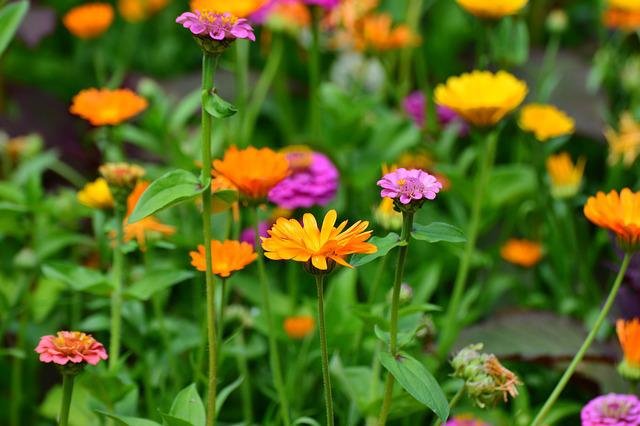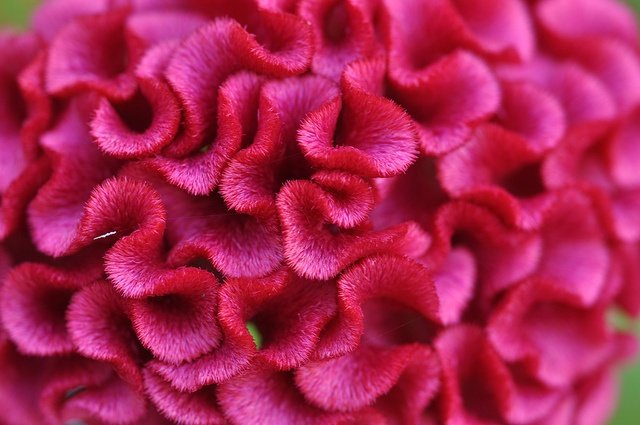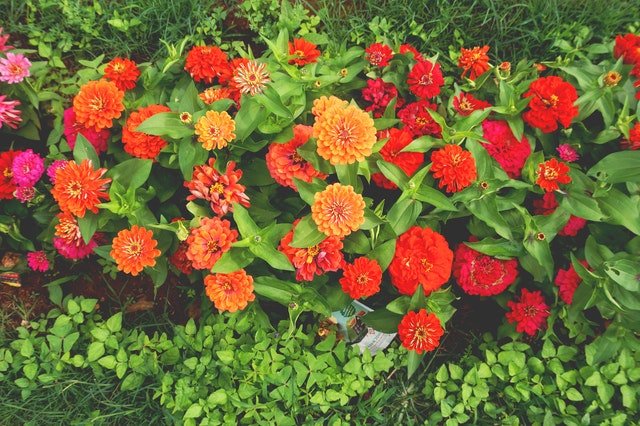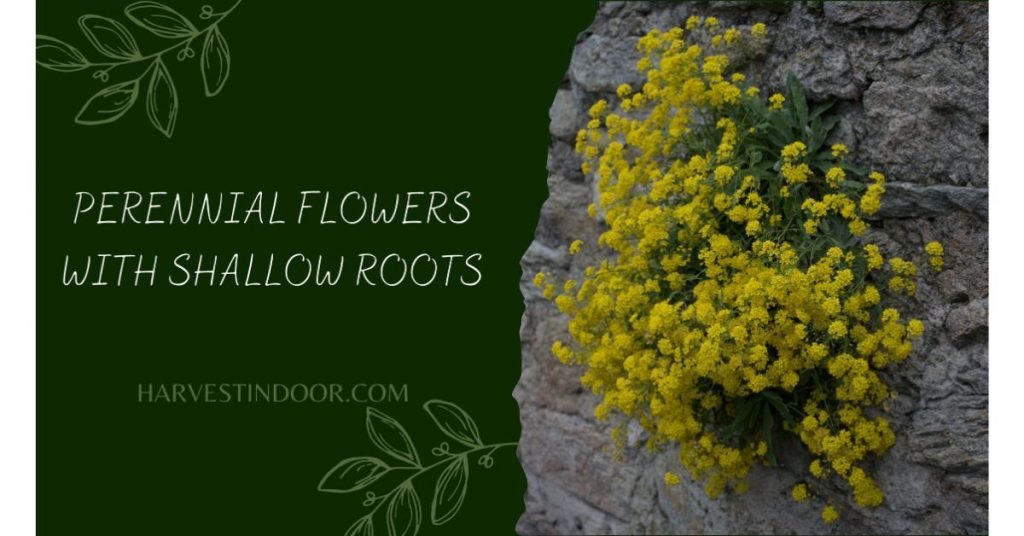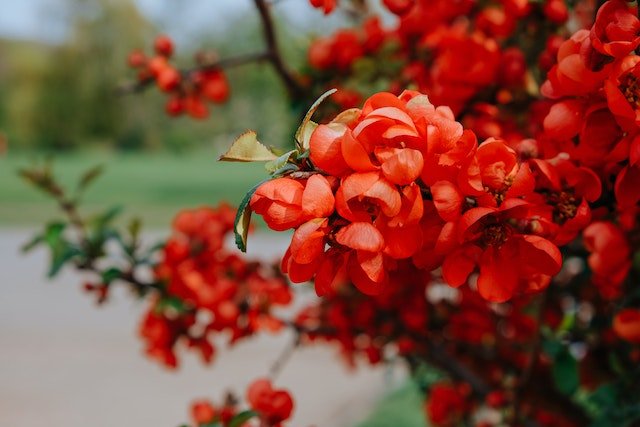Last updated on October 28th, 2022 at 08:02 am
There are many weeds that can easily be mistaken for daisies. We will discuss the plants and flower characteristics of daisies as well as list some weeds that look like daisies. Knowing the difference between these plants can help you identify and remove them from your garden more effectively!
One of the most distinguishing features of a daisy is its central disc floret. This floret is usually a different color than the petals and is surrounded by an outer ring of ray florets. The central disc floret can be yellow, brown, or black, while the ray florets are typically white. Daisies also have a long stem with leaves that are arranged in a rosette pattern.
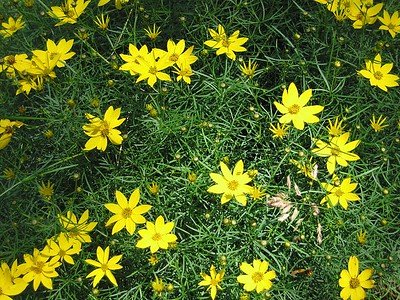
Table of Contents
Why do you want to grow daisy-like weeds or bushes?
While most people go to great lengths to rid their yards of weeds, some gardeners actually strive to grow these unwelcome plants.
Weeds are typically defined as unwanted or undesirable plants, but this designation is somewhat subjective. For example, some gardeners might consider a dandelion to be a weed, while others might appreciate its cheerful yellow flowers.
In fact, many weeds are quite beautiful, and they can add interest and variety to a garden. Moreover, weeds are often much harder than cultivated plants, and they require far less care and attention. As a result, growing weeds can be a low-maintenance way to add color and texture to your yard.
weeds are often seen as a nuisance in the garden. However, there are many reasons why someone might want to grow daisy-like weeds or bushes.
- For one thing, weeds can help to prevent soil erosion. Their deep roots help to hold the soil in place, and their dense network of leaves helps to deflect wind and water.
- In addition, weeds help to slow down the flow of rainwater, giving the ground a chance to absorb the water before it runs off. As a result, weeds can play an essential role in preventing soil erosion.
- Daisy-like weeds can provide a valuable source of food for wildlife. Small animals such as rodents and birds often eat the seeds of weeds, and the flowers of some weeds are an important source of nectar for bees and other pollinators.
- Finally, weeds can add color and interest to a garden. Many weeds have small, yellow flowers that brighten up even the most boring patch of earth. For all these reasons, it is actually beneficial to have weeds in your garden.
Some weeds that look like daisies.
While daisies are generally considered to be beautiful flowers, there are many weeds and bushes that resemble them. Here are some of the most common:
1. Dandelions
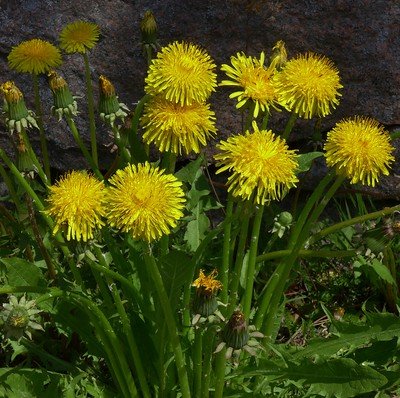
Dandelions are a type of weed that is often considered to be a nuisance by homeowners. However, these plants are actually quite interesting, and they have a lot in common with daisies. Both plants have a yellow flower head that is composed of many small petals. The flowers of dandelions are slightly larger than those of daisies, but they serve the same purpose: to attract pollinators.
Dandelions also have a long, slender stem that is topped with a green, deeply lobed leaf. The leaves of dandelions are much larger than those of daisies, and they are what give the plant its distinctive appearance. Overall, dandelions are very similar to daisies, but they are classified as weeds because they often grow in places where they are not wanted.
2. Chickweed
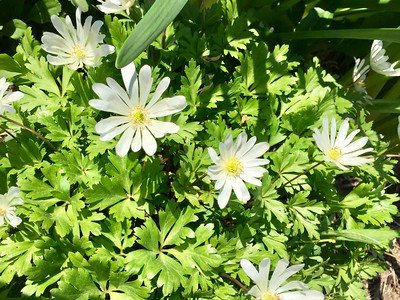
Chickweeds are small, weak-stemmed annual or perennial plants that typically grow close to the ground. They are often found in lawns, gardens, and other areas where they can compete with other plants for water and nutrients. Chickweeds are characterized by their small, white flowers which resemble those of daisies.
However, unlike daisies, chickweeds typically have leaves that are much smaller in size. Chickweeds are considered to be weeds because they can quickly spread and take over an area if they are not controlled. In some cases, they can also cause allergies in humans and animals. Although they may be considered a nuisance by some, chickweeds can also be used as food or animal feed. When properly controlled, chickweeds can actually add a splash of color to a garden or lawn.
3. Bulbous Buttercup

Bulbous buttercups are often considered weeds, as they can quickly spread and take over a garden bed. However, they are also popular as cut flowers, and their cheerful yellow blooms can brighten up any room. Bulbous buttercups get their name from their round, bulb-like roots, which store nutrients and water. These roots allow the plants to withstand drought conditions and continue to bloom even when other flowers have withered.
The flowers themselves are daisy-like, with bright yellow petals and a dark center. The similarity in appearance between bulb buttercups and true daisies is thought to be the result of convergent evolution, as both types of plants have adapted to attract pollinators such as bees.
Despite their similarities, there are also several key differences between these two flower families. For instance, daisies typically have much larger flowers, while buttercups tend to have smaller blooms. In addition, the leaves of a buttercup are usually glossy and deeply lobed, while those of a daisy is more likely to be dull green and serrated.
Ultimately, whether or not you consider bulbous buttercups to be weeds is a matter of personal opinion. However, there is no denying that these cheerful flowers add a splash of color to any garden.
4. Yellow Woodsorrel
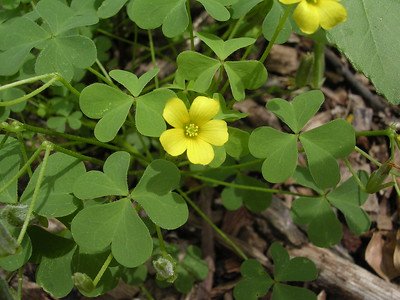
Bushy and weed-like, yellow woodsorrel (Oxalis stricta) is often mistaken for a miniature daisy. It’s easy to see why: This plant has bright yellow petals and deeply veined leaves, which give it a striking resemblance to its larger cousin. However, there are some key differences between the two plants. For one, yellow woodsorrel is a weed, whereas daisies are perennials.
Additionally, while daisies typically have white petals, yellow woodsorrel has brighter, lemon-hued blossoms. Despite their differences, these plants share one important similarity: Both are beloved by bees and other pollinators. So, whether you consider them weeds or wildflowers, yellow woodsorrel is sure to add a touch of beauty to your garden.
5. Purple Coneflower
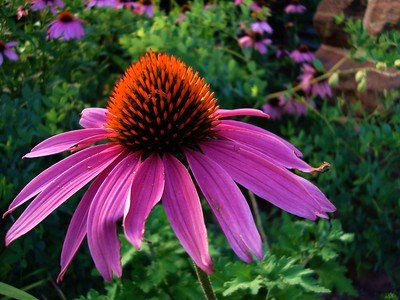
While technically classified as a weed, the Purple Coneflower (Echinacea purpurea) is a popular garden plant due to its ease of care and daisy-like appearance. Native to North America, this hardy bush can reach up to six feet in height and produces purple or pinkish flowers from midsummer to fall.
Coneflowers are often planted in mass as borders or in naturalized areas, but they can also make great-cut flowers. One of the main reasons cone Flowers are considered weeds is because they self-seed so readily. However, these plants are also very tolerant of drought and poor soil, making them ideal for difficult growing conditions. So whether you consider them a weed or a wildflower, there’s no denying that Purple Coneflowers are a beautiful addition to any garden.
6. Evening primrose
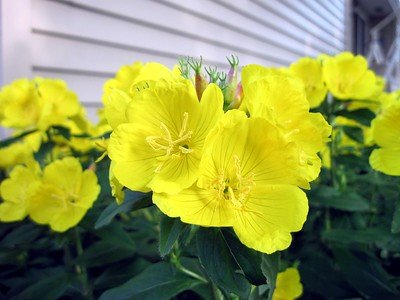
Evening primrose (Oenothera biennis) is a long-lived weed or bush that grows in open areas throughout North America. It is very similar to the common daisy, with its yellow or white petals and central disk. The main difference between the two plants is that evening primrose has four petals, while daisies typically have five or more.
Evening primrose is also a much more aggressive plant, often taking over gardens and lawns. While it is technically a weed, evening primrose is often planted deliberately because of its beautiful flowers. The plant blooms in the late afternoon or evening, giving it its distinctive name. Evening primrose is a hardy plant that tolerates both hot and cold climates. It can be found growing in fields, along roadsides, and in other disturbed areas.
7. Goldeneye phlox

Weeds are plants that are considered to be unwanted in a particular situation. Goldeneye phlox (Phlox pilosa) is a plant that some people consider to be a weed, while others see it as a desirable bush. Goldeneye phlox gets its name from its bright purple flowers, which resemble daisies. The plant is native to North America and can be found in many parts of the United States.
While some people consider goldeneye phlox to be a weed, it is actually a valuable plant that provides food and shelter for many different types of animals. The plant’s roots help to stabilize the soil, and its flowers provide nectar for bees and other pollinators. So, whether you consider goldeneye phlox to be a weed or a bush, there is no doubt that it is a valuable plant!
8. Indian blanket

Many people believe that Indian blanket flowers (Gaillardia pulchella) are weeds because they often grow in undesired areas, such as along roadways or in open fields. However, the Indian blanket is actually a native North American wildflower that belongs to the Aster family. What makes this flower look weed-like is its bush growth habit and daisy-like appearance.
The similarity between these two types of plants ends there, however, as Indian blanket flowers are much more colorful than their weed counterparts. While both have yellow centers, Indian blanket flower petals are red, orange, and yellow, while weed flower petals are typically just white or yellow. So, whether you consider them to be weeds or wildflowers, there’s no denying that Indian blanket flowers add a splash of color to any landscape.
9. Large Buttercups

There is some debate over whether large buttercups are weeds or not. They certainly have a weed-like appearance, with their unkempt growth and daisy-like flowers. However, they also have certain characteristics that make them more similar to bushes. For example, they tend to be much larger than most weeds, and their leaves are often more glossy.
So what makes them look like daisies? The main similarity is the flowers. Large buttercups have bright yellow petals that resemble those of a daisy. However, there are also some important differences. Daisies tend to have much smaller flowers, and their leaves are usually green. So while large buttercups may look like daisies, they are actually quite different plants.
10. Maximilian Sunflower

Maximilian Sunflower is a weed, more specifically a bush that often looks like a daisy. The weed’s Latin name is Helianthus annuus and it is part of the sunflower family. The plant can grow to be six feet tall and three feet wide, with leaves that are broad and sparse.
The flower heads are usually 3-4 inches in diameter and contain 20-25 ray florets that range in color from yellow to orange. The center of the flower head is composed of disk florets that are brown or dark yellow. Maximilian Sunflowers are found throughout the United States, typically in open areas such as fields or roadsides.
They are considered weeds because they often compete with other plants for resources such as water and sunlight. Maximilian Sunflowers are also known to harbor diseases that can infect other plants. Despite their weed status, many people enjoy the sunny disposition and cheery appearance of these flowers.
11. Coreopsis
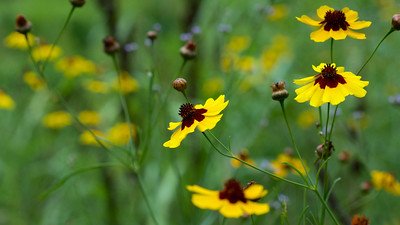
Coreopsis, also known as Tickseeds, are annual or perennial flowering plants that are part of the Asteraceae family. The plants are native to North America and most of them grow about two feet tall. They have long, lance-shaped leaves and daisy-like flowers with yellow petals and brownish-red centers.
Some species of Coreopsis are considered to be weeds because they can spread quickly and take over an area. Others are grown as ornamental plants because of their beautiful flowers. Whether you consider them to be a weed or a flower, there is no denying that Coreopsis plants have a unique appearance.
12. False golden asters
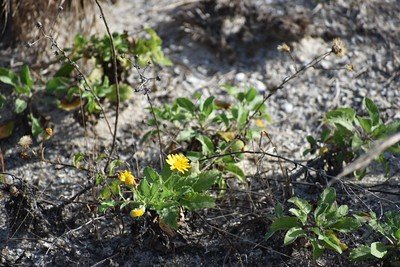
False golden asters (Chrysopsis pilosa) are a type of weed that resembles daisies. They are native to North America and typically grow in open areas like fields and roadsides. The plants are Hairystem hollow-stemmed and can reach up to 3 feet tall. False golden asters have yellowish-green leaves and small, yellow flowers with orange centers.
The flowers bloom from summer to fall. While they may look pretty, false golden asters are considered weeds because they compete with native plants for resources. They can also spread rapidly, making them difficult to control. If you’re trying to maintain a neat and tidy lawn, it’s best to remove false golden asters as soon as you spot them.
13. White prickly poppy

White prickly poppy is a weed that looks like a bush with daisy-like flowers. The flowers have white petals and a yellow center. The leaves are alternate, oblong, and have prickly hairs on the margins. White prickly poppy is native to Europe and Asia. It was introduced to North America in the 1800s as an ornamental plant.
Today, it is found in all states except Hawaii. White prickly poppy invades disturbed sites such as roadsides, fields, gardens, and vacant lots. It tolerates a wide range of soil types and can grow in sun or shade. The best time to control the white prickly poppy is in the spring before it flowers. Small plants can be pulled by hand. Larger plants can be controlled with herbicides.
14. Blackfoot daisies
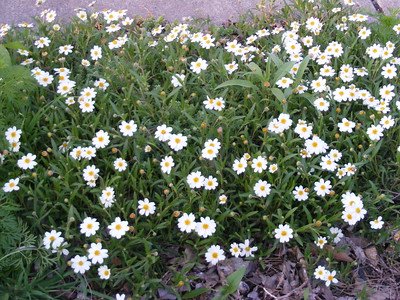
Blackfoot daisies (Melampodium cinereum) are small, perennial bushes native to the southwestern United States and Mexico. They get their name from the black seeds that are produced in their flowers. Blackfoot daisies are often considered weeds because they can spread quickly and are difficult to control.
However, some people enjoy them for their Daisy-like flowers and easy-care nature. Blackfoot daisies grow best in full sun and well-drained soil. They are drought-tolerant and can survive in poor-quality soil. Blackfoot daisies can reach up to two feet tall and have a spreading habit. The leaves are dark green and slightly fuzzy.
The flowers are yellow with a black center, and they appear in late spring and summer. Blackfoot daisies are not true daisies (Family Asteraceae), but they do belong to the same plant family (Melampodium).
15. Carefree Delight
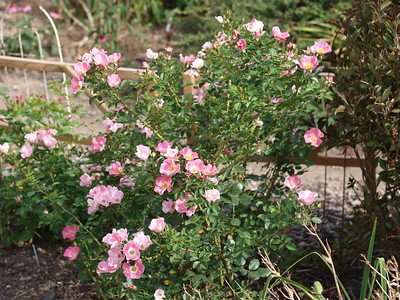
Carefree Delight is a weed that looks like a bush and has daisy-like flowers. The weed is not the same as a daisy, but it does have some similarities. The main difference between the two plants is that Carefree Delight is a weed and daisies are not. Daisies are considered to be wildflowers, while Carefree Delights are considered to be weeds.
Another difference between the two plants is that daisies have a more slender stem, while Carefree Delights have a thicker stem. The leaves of Carefree Delights are also wider than those of daisies. Lastly, the flowers of Carefree Delights are generally smaller than those of daisies. Even though they look similar, there are several key differences between Carefree Delights and daisies.
16. Abbotswood Potentilla

Abbotswood Potentilla (Potentilla sterilis) is a bush that produces daisy-like flowers. It is often considered a weed, as it can spread quickly and compete with other plants for resources. However, it is also sometimes planted deliberately as an ornamental plant.
The similarity between Abbotswood Potentilla and daisies is largely due to the shape of their flowers. Both have a central disk surrounded by petals, although the number of petals varies between species. The main difference between the two is that daisies have ray florets (petals that look like rays of light) while Abbotswood Potentilla has disc florets (petals that are fused together to form a disk).
Another difference is that the leaves of Abbotswood Potentilla are usually covered in small, sharp spines. These spines help to deter herbivores from eating the leaves, but they can also make the plant difficult to handle.
As you can see, there are many weeds that look like daisies. While some people may consider these weeds to be a nuisance, others find them to be beautiful and enjoyable. If you are considering planting daisies in your garden, make sure to research the different types of daisies so that you can choose the right one for your needs.

Gardening is my passion and growing plants indoors has always been a stress relief for me. Grow a banana tree in my apartment once (although failed to produce bananas).


